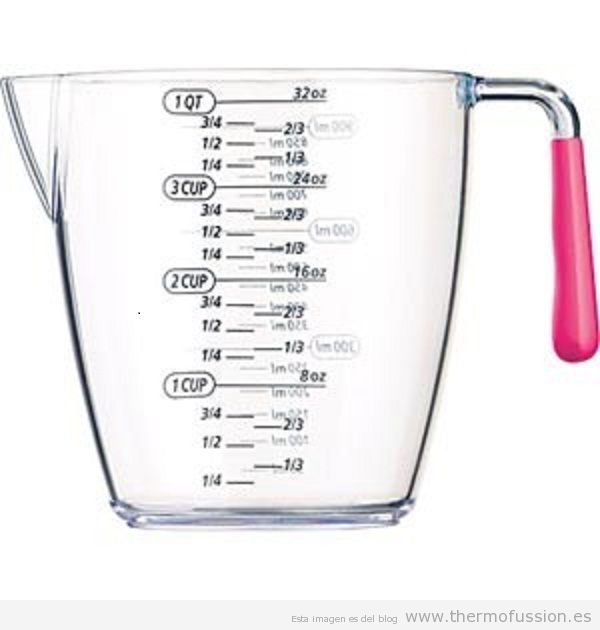

lo mismo se aplica en repostería obviamente.Įs por eso que he creado una tabla con las equivalencias de tazas a gramos para que os ayude en caso de que haya alguna receta que no lleva la equivalencia en gramos escritos. No es lo mismo 1 taza de rocas que 1 taza de plumas. Recordar que 1 taza de peso varía en cada ingrediente. Mis tazas y cucharas equivalen a lo siguiente: Use the chart if you’re unsure of how much an ingredient weighs, or if you’re following a recipe that doesn’t offer weight measurements. The majority of my healthy recipes here on the blog include weight measurements in grams.
CUANTO ES UNA TAZA EN ML DOWNLOAD
That might be an extreme example, but as you’ll see once you download the chart, every ingredient has a sightly different density. If that’s confusing, think of it like this: 1 cup of rocks would not weigh the same as 1 cup of feathers. This is why I created a chart (see below) where you can see all the equivalences for most of the ingredients I use on my recipes. That’s because different ingredients have different densities. So, my measuring cups and spoons are equivalent to the following:ġ cup of every ingredient will NOT weight the same. Because one cup is one cup worldwide! You may find little variations in the grams or millilitres but its small and won’t spoil the recipe!

In this post I am going to show you the ones I use, but you can easily find any brand out there that will work just fine. A serious baker may tell you that measuring by weight is the way to go, but measuring cups and spoons are the go-to method for most of us (myself included). Serve immediately.Pick up any cookbook from the shelf and flip to a random recipe and it's almost guaranteed that it measures something in cups, tablespoons, or teaspoons. Remove the arepa from the hot oil and let it drain on paper towels.Then carefully pour the seasoned egg inside and immediately place the arepa back in the hot oil and fry it for another 2-3 minutes or until the egg is cooked through. Once the arepa is cool enough to handle, make an incision with a sharp knife about 1½ inches (3.5 cm) wide on the side of the arepa to make a small pocket.
CUANTO ES UNA TAZA EN ML CRACK
In the meantime crack one egg into a cup that has a pointy lip and season with salt and pepper to taste.Then take it out of the oil and drain it on paper towels. Once the arepa rises to the surface start covering it with more oil with the help of a large spoon for about 2-3 minutes. Gently place the arepa in oil that has been pre-heated at 350✯ (180✬) and let it sink to the bottom.Repeat this process with the rest of the dough. Make sure the arepa is evenly flat and gently press the edges with your fingers to get rid of any cracks. Place one ball inside a tortilla press covered with plastic and flatten it to about ¼ inch (.60 cm) thick.When the corn meal has absorbed the water, knead it with your hands until the dough is smooth and without any lumps. Slowly add the corn meal and stir it with a wooden spoon or spatula.Pour the hot water in a large bowl and then add the food coloring, salt and sugar.The first time I made them I was not able to get that freaking egg inside and after the third arepa I decided to use a cup with a pointed lip to see if it would go in, and sure enough, it did!Īfter making these arepas you will understand why they’re so popular in Colombia, the combination of the seasoned fried dough with the fried egg is really, really good and I wouldn’t blame you if you end up eating more than one.

I’m not going to lie to you but making these arepas is not easy because putting that egg inside without making a mess in your kitchen takes a lot of practice. These arepas are extremely popular in the Colombian Caribbean coast and you will see all kinds of street vendors selling them like hot cakes, well, like hot arepas (bad joke). I’m talking about the famous arepa de huevo or egg stuffed arepa. So, in today’s post I have a Colombian recipe that is not only made with corn but it is also fried, not once, but twice. And by now you should also know that we love to fry our food… a lot. If you follow my blog you should know by now how much Colombians love anything that is made with corn like buñuelos, natilla, empanadas and arepas.


 0 kommentar(er)
0 kommentar(er)
